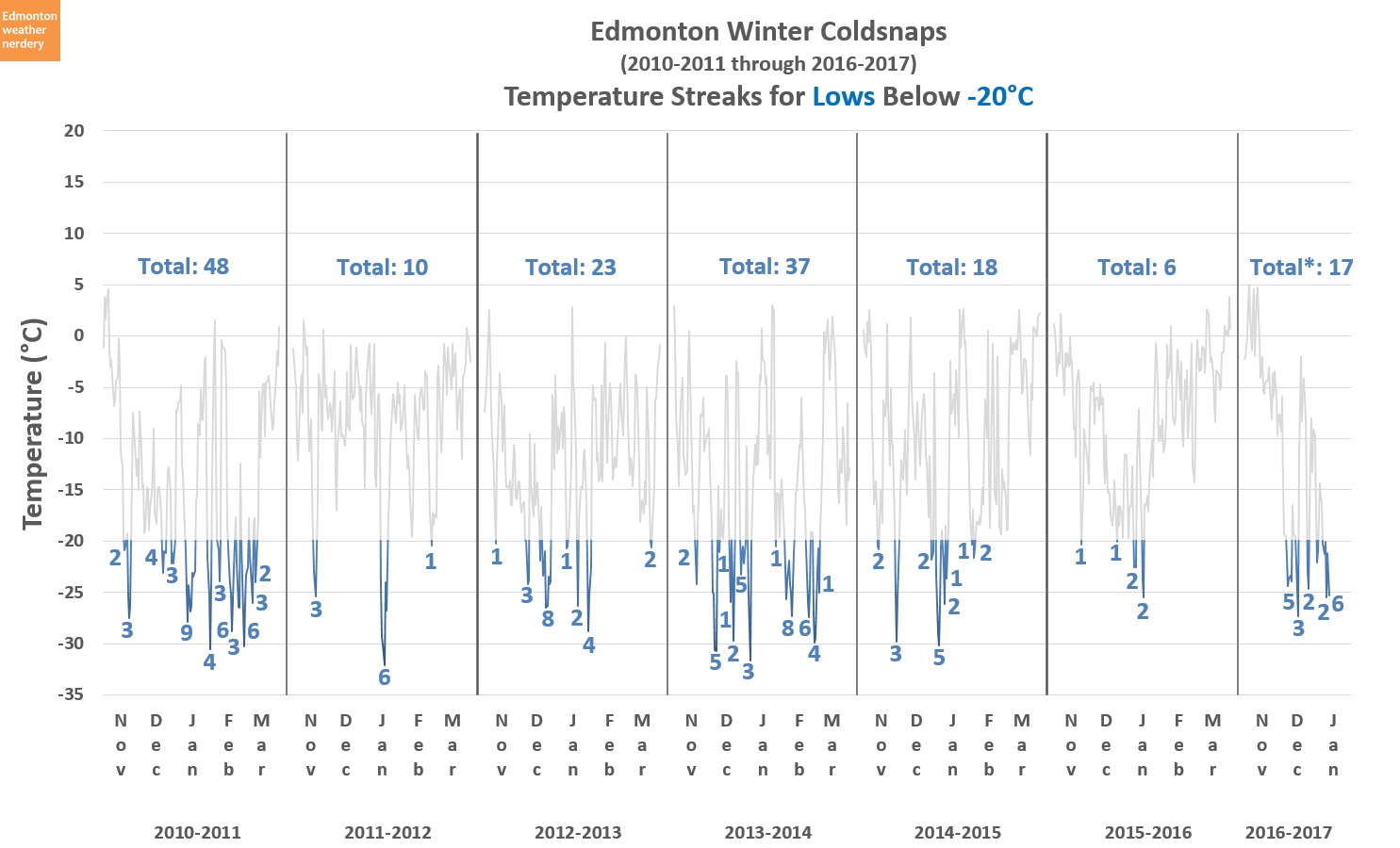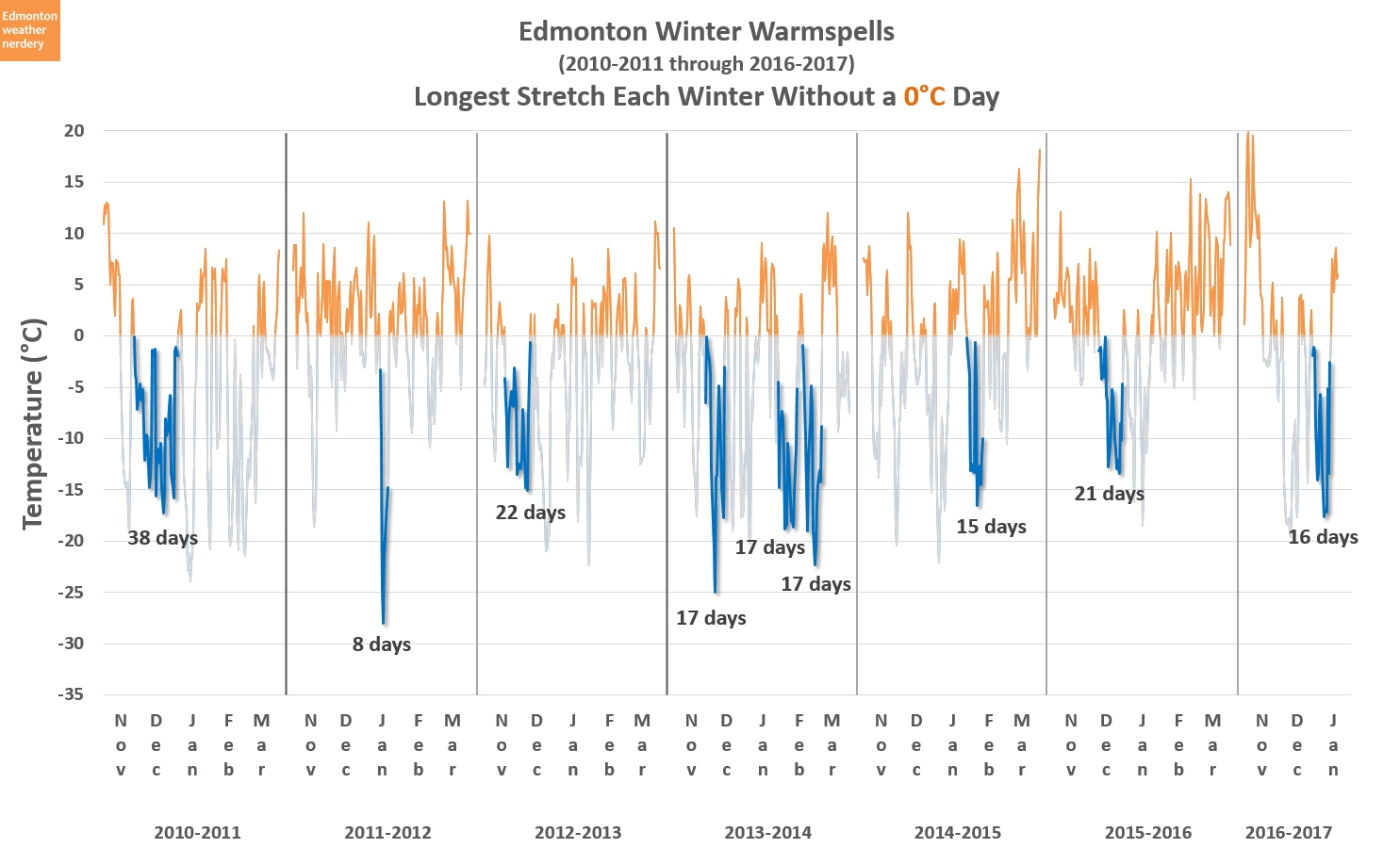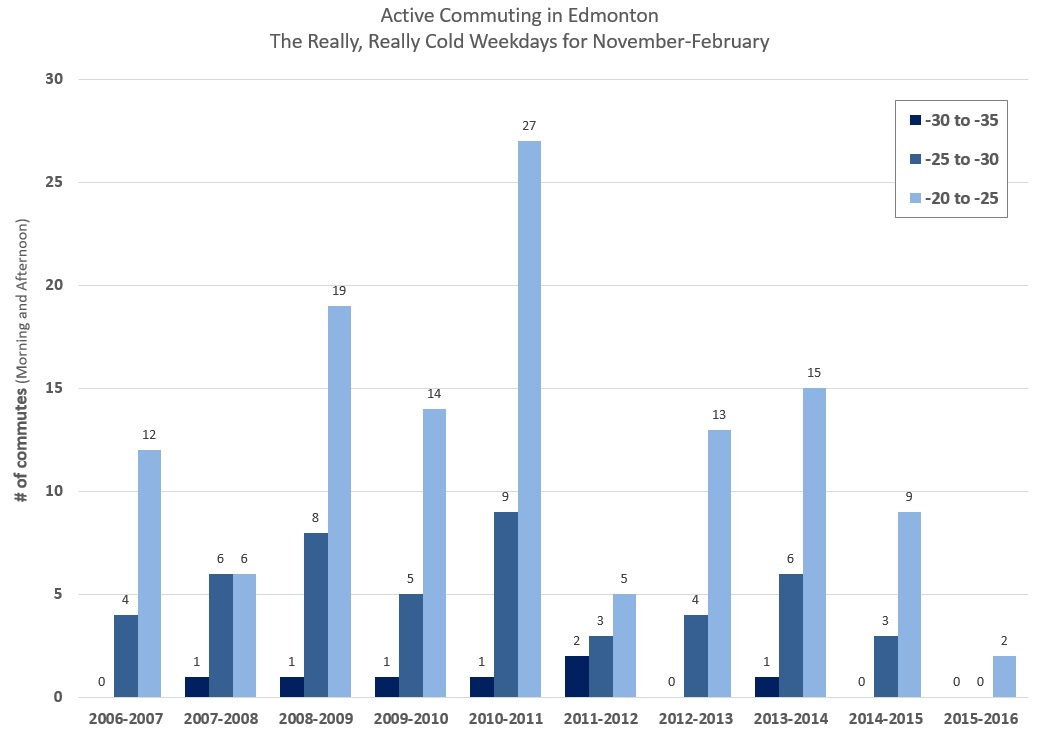There isn't much to say about active commuting in the summer in Edmonton: it's not particularly rainy, or particularly humid, or particularly hot.
So this will be all about active commuting in the winter, and a short overview of what to expect. As always, full explanations and information are available in the links to the original posts.
First Snowfall
We had significant September snowfalls in 2014, 2017 & 2018, although going back to the 2000, 1990s, & 1980s September snow was actually pretty rare. (we've also recorded snow twice in August). When the first snow falls people then scramble for their fatbikes and studded tires, but most of the time that early snow quickly melts.
First Lasting Snow
The earliest that we've recorded lasting snow was October 16.
More typically, snow doesn't start to hang around until November. 2017 and 2018 were both quite early, right at the start of November. Mid-to-late November had been more typically, though. That's often several weeks or even a month after the first snowfall.
Snowy Months
Our snowiest months are November, December, January and March, which all average about 20cm of snow (the white line in the middle of the messy chart above). February is the notable low for snow, as far as the winter months go.
Over the course of a winter we'll typically get just about as much snow as Winnipeg, actually a little bit less than Calgary, and a lot less than Montreal.
Snowstorms
When we get snow, about 85% of the time we get less than 5cm, and 95% of the time it's less than 10cm. But that means that each winter we usually get around 2~5 big storms with 10cm or more. Those can certainly making walking or biking a challenge, although they're not great for taking the bus or driving either.
Days Below -20°C
On average, each winter we have about 23 days where the temperatures drops below -20°C. That can range from 10 cold days during warm winters, up to 40-or-more in the cold ones.
We're most likely to get those cold days right at the beginning of January. But at any point during the winter we're more likely to see a daytime high above 0°C than a low below -20°C.
Coldsnaps
When we do get a coldsnap the Low temperature can stay below -20°C for anywhere from a day to more than a week, although they're usually 5 days or less. In a typical winter we get anywhere from 3-10 of these coldsnaps.
Warmspells
The flipside of coldsnaps is our mid-winter warmspells. We don't like to call them chinooks in Edmonton, but you can read all of my thoughts on that here.
During the depths of winter our temperatures will fairly reliably pop up above 0°C or 5°C - for a day, or 3 days, or 5 days or more. And the longest stretch each winter without a warmish day is usually about 2 or 3 weeks.
Cold Commutes
This blog's first real post looked at the number of extremely cold, weekday commutes that we can expect in a winter. 2015-2016 and 2010-2011 are standouts because they are so low and so high respectively. But in a typical winter a year-round active commuter in Edmonton can expect 10-20 trips (either morning or evening) below -20°C.
10-20 really cold trips might sound like a lot, but in a typical winter that number is dwarfed by the ones that are around or above freezing. So you could set a lower limit of -20°C or even -10°C, and still walk or bike for a lot of the winter.












No comments:
Post a Comment